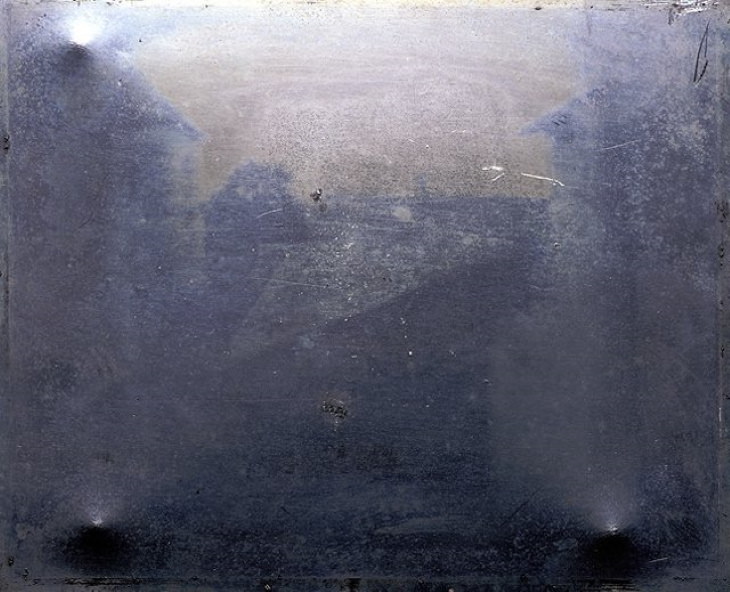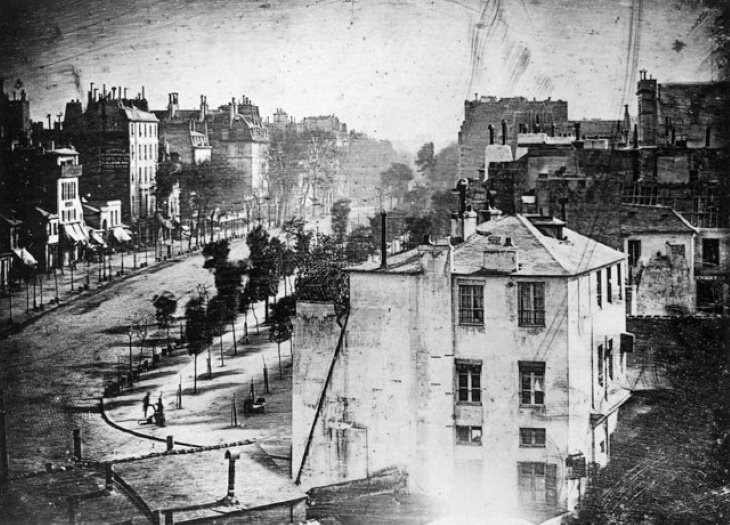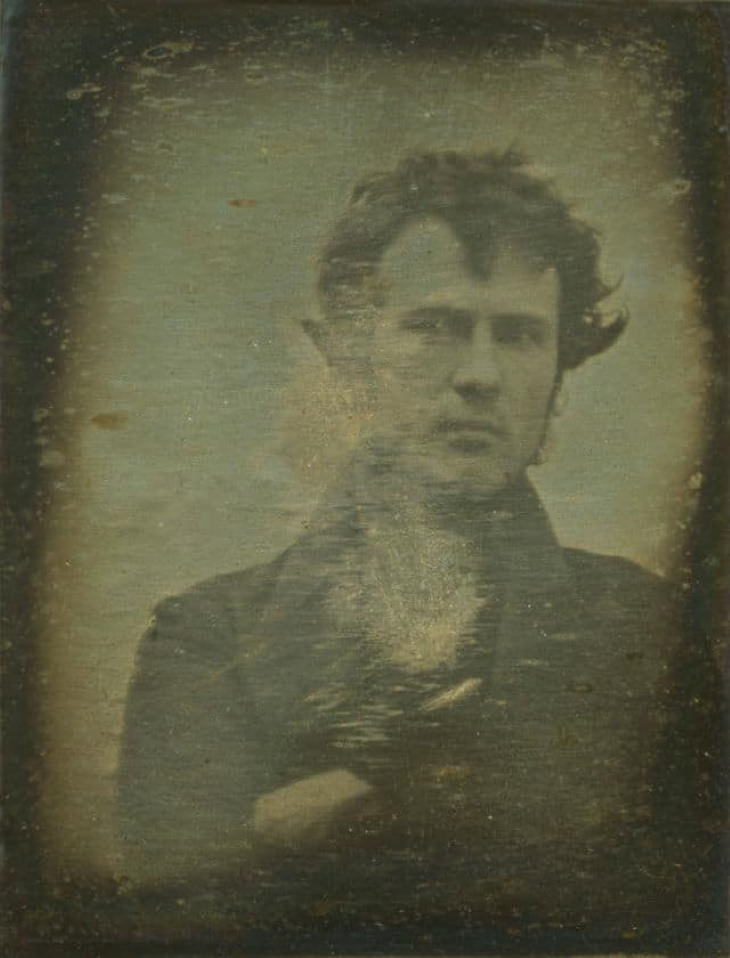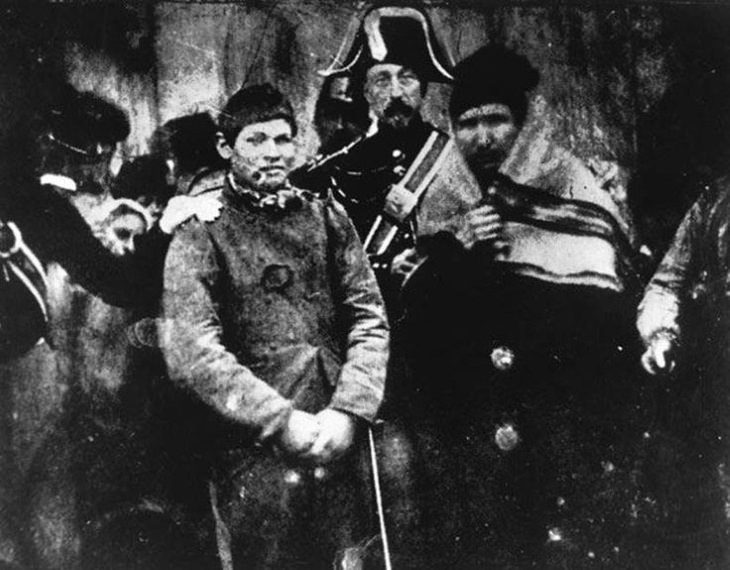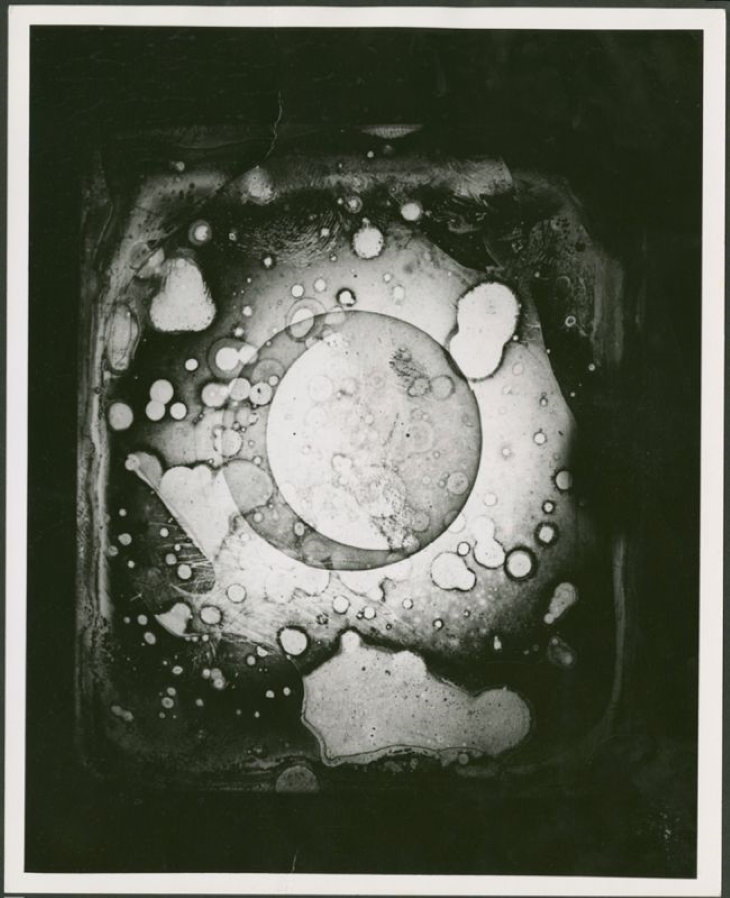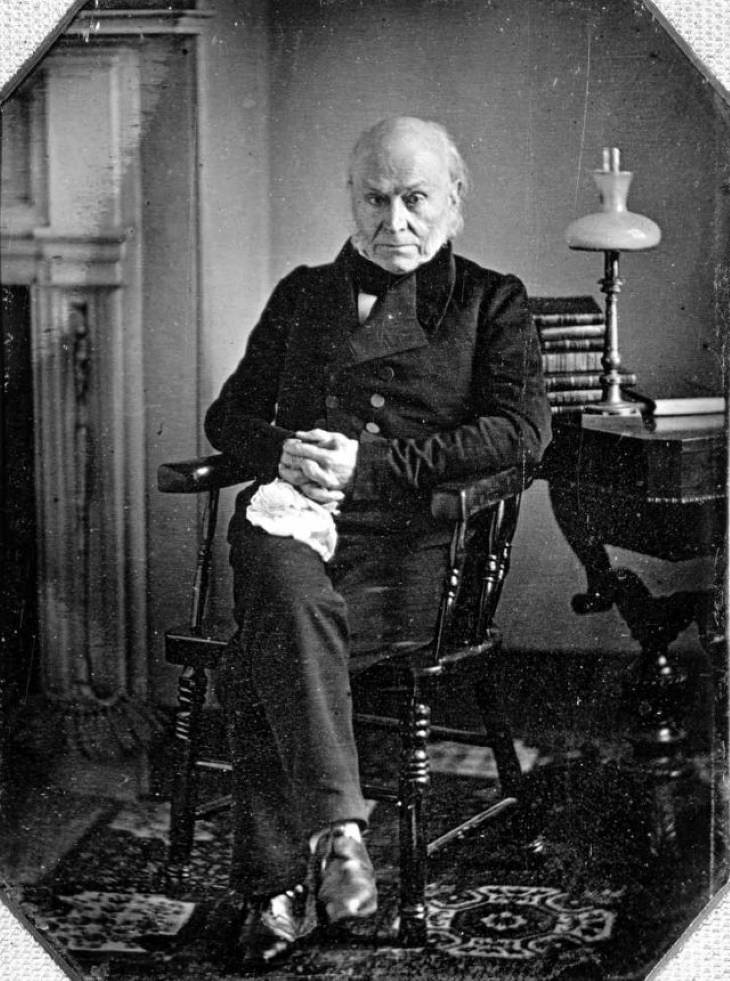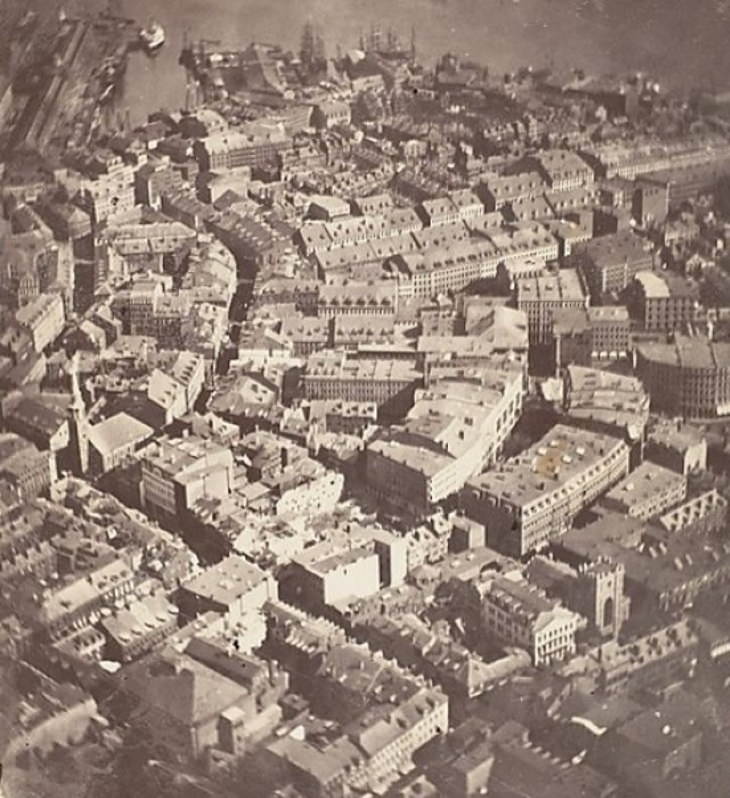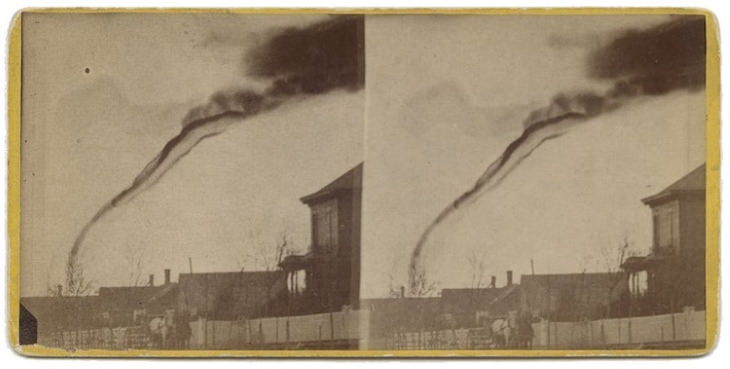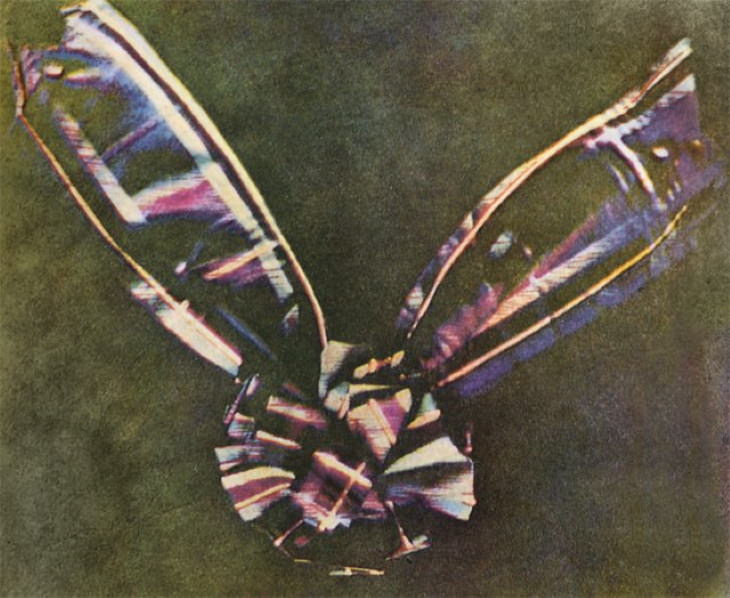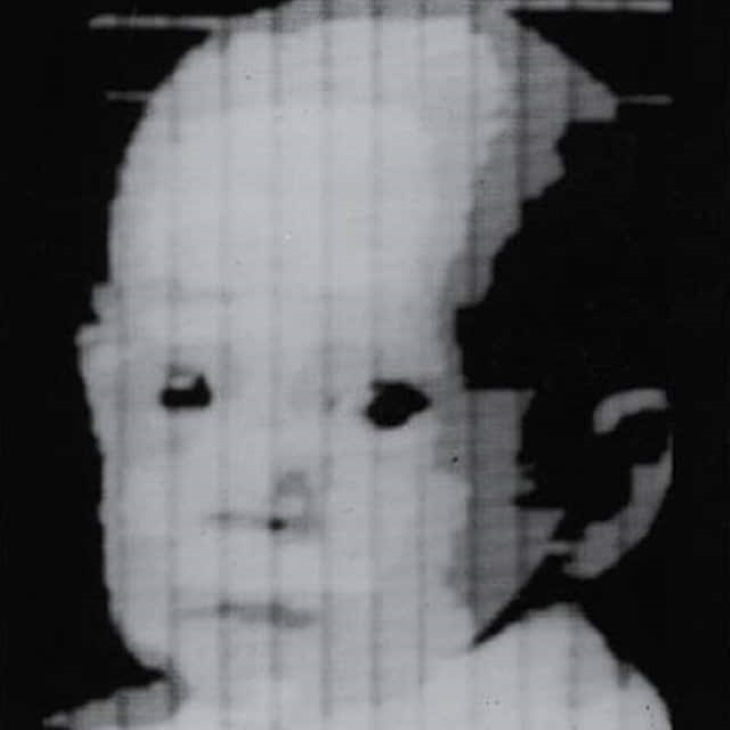1. The Oldest Photo (1826)
Nicéphore Niépce was the first scientist to find a way to fix camera images onto a color-sensitive surface. These early photographs were created on metal plates coated in Bitumen. Photos like this one would be called heliographs, and they took hours of continuous exposure to develop.
This particular street view took 8 hours, which was hardly practical, and it would ultimately be Niépce’s student, Louis Daguerre who invented a new technique that was significantly more efficient, as the development of a daguerreotype photo took only a few minutes.
Below is an enhanced version of the photo above.
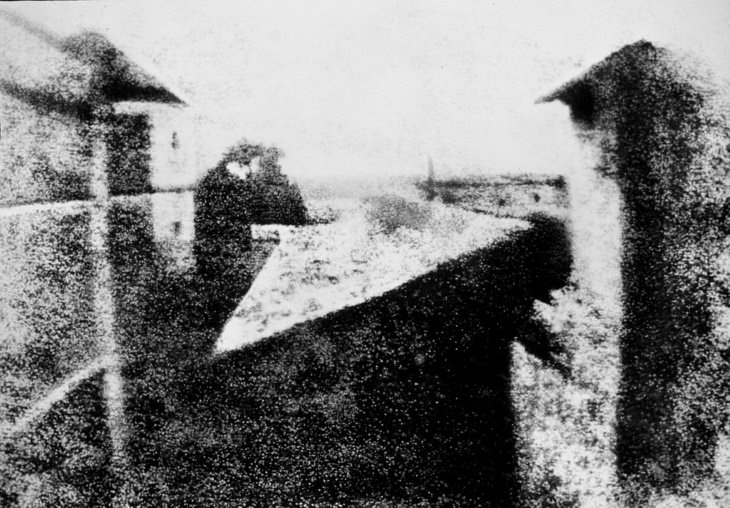
2. The Oldest Photo with a Human (1838)
This is one of the most famous photos by Louis Daguerre depicting a man shining his shoes at Boulevard du Temple in Paris. Famous as it’s the first-ever photo to feature a person. As previously mentioned, these first photographs required long exposure times (this particular image took 10 minutes), and so depicting a person would require them to stay still for extended periods of time. Interestingly, Daguerre had captured the man accidentally, initially only intending to create a photo of the street.
3. The Oldest Ever Self Portrait (1839)
Robert Cornelius was the first-ever person to take a photographic self-portrait, or as we would call it today - a selfie. If you’re wondering why this photo is blurrier than the previous, much older, image: this is because Cornelius was moving to turn the camera on and off to take the picture, and reportedly, he had to sit still for over a minute to snap this self-portrait.
4. The Oldest News Related Photo (1847)
Photography came to be an essential part of news reporting very early on. This image is the oldest known news photo, taken in France a mere 20 years after the invention of photography. The photo is depicting an arrest, though the people shown in the image, as well as the author of the photograph remain unknown.
5. The First Photograph of the Moon (1840)
John William Draper took the first photo of the moon from his rooftop observatory at New York University. Even if you were to ignore the damage this particular photo had clearly sustained over the years, note how difficult it was to photograph a poorly lit night sky with the daguerreotype technique, as the moon is barely distinguishable from the background.
6. The Oldest Presidential Photo (1843)
The first presidential portrait was taken of John Quincy Adams, the 6th US president, several years after his presidential career. The photo was taken by Philip Haas at his studio in Washington, D.C.
7. The First Aerial Photo (1860)
The first plane flight was conducted in 1903, but this aerial photograph dates back to 1860, how was this possible? Well, James Wallace Black, the author of the first aerial photo, attached a camera to a hot air balloon suspended over Boston and managed to take this birds-eye view of the city, which he titled “Boston, as the Eagle and the Wild Goose See It”.
8. The Oldest Photo of a Tornado (1884)
On the 26th of April, 1884, a tornado moved through Anderson County in Kansas. 14 miles away from the eye of the storm, amateur photographer A.A. Adams set up his camera on the territory of a fruit farm, becoming the first-ever person to photograph the devastating storm.
9. The First Photo of a Solar Eclipse (1851)
Capturing the solar eclipse was an impossible task for early cameras, as they were quite bad at picking up the Sun’s corona around the eclipse. Johann Julius Friedrich Berkowski was a scientist at the Royal Observatory in Königsberg, Prussia (now Kaliningrad, Russia), and he was the first to capture this beautiful phenomenon live.
10. The Oldest Color Photo (1861)
This photo of a tartan ribbon is the first truly colorful photo. Before that, photographers achieved a colorful photo effect by simply coloring black and white photos with paints. The author of this image is James Clark Maxwell, a Scottish scientist, and inventor of the single-lens reflex (SLR) camera. To capture the color of the ribbon, he took 3 different photos of the ribbon (one in yellow, one in blue, and one in red) and then merged the three images and ended up with this photo.
11. The First Colorful Underwater Image (1926)
Underwater photography has been a difficult milestone to accomplish, especially in color, as it demands a lot of light and, of course, waterproof equipment. National Geographic Photographer Charles Martin and botanist William Longley encased a camera in a waterproof housing and used dangerous magnesium-based flash equipment to take the first-ever colorful underwater photo. The photo was taken near the Florida Keys, and it shows a hogfish.
12. The First-Ever Digital Photo (1957)
Digital photography is obviously dominant nowadays, but it wasn’t available until the 1970’s when the first digital cameras came into existence. Before that, photos were digitized using scanners, and this photo is the first example of this technology. Russell Kirsch managed to digitize the first-ever photo, one of his baby son, in 1957 using a drum scanner he invented.
Related Articles:

